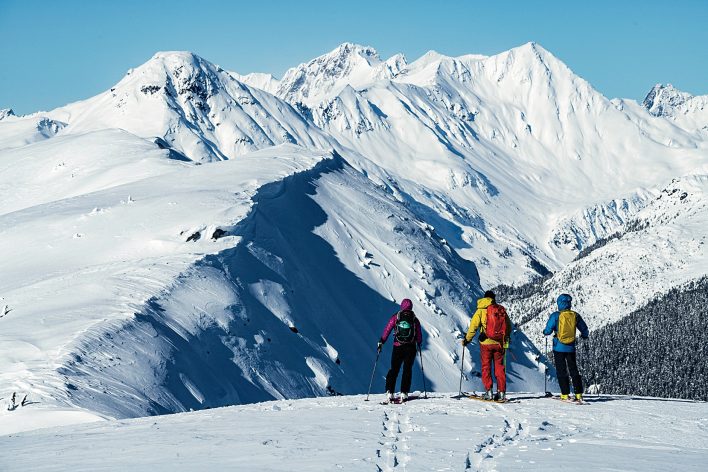Take in the scene and gather data from your surroundings. Things are not always what they seem, especially in the backcountry.

Backcountry skiers usually start their days by checking the avalanche and weather forecasts. Reports on recent avalanches, others’ snowpack observations and the day’s weather are a solid foundation, but they are only the beginning of gathering information. Time in the backcountry provides infinite opportunities to add data. While sometimes what you see on the ground lines up with the forecast, the backcountry is a constantly changing environment. Forecasters’ predictions don’t always come true.
Bjarne Salén, the filmmaker behind Cody Townsend’s The Fifty Project, knows a healthy dose of skepticism can be a lifesaver in the mountains. “Even if the avalanche report says two out of five [moderate] and you’re on your home mountain, it’s always good to keep your head up and be alert,” Salén says. “If you trust [a forecast or a snow pit] 100 percent, then you can end up in some trouble.”
Salén makes sure he’s not just concentrating on the skintrack or ski turn in front of him, but also on what’s happening around him. “When you’re out there, just keep your head up and look at what’s in front of you and on the side of you,” he explains. “What’s on the right? What’s on the left?” Taking off the blinders allows you to get the full view of your surroundings.
In Salén’s experience, being observant takes more than just having your head on a swivel. It involves being mindful of changes in aspect and elevation. After all, just because you find perfectly stable snow on the skintrack doesn’t mean you’ll be skiing the same layers when you descend the other side of a peak. “You trust one aspect, and then, 30 feet up, it’s a different aspect,” he says. “It might face the sun more at noon. And then that can be a total game changer.”
Salén feels backcountry recreators often overlook observing their partners, not just their surroundings. “Human factors, super important,” he says. On top of keeping tabs on conditions, he’s also making notes on his group. “How does everyone feel? Is someone stressed about something and someone too antsy to go up there? Is someone too stoked and forgetting to see what’s around them?”
Keeping track of everything—weather, avalanches, snowpack, aspect, elevation, people—can seem daunting. Writing in either a notebook or the notes app on a smartphone can be one way to sort the data. With information compiled, the next step is speaking up and sharing all the information with your partners.
This article was originally published in Issue No. 150, The Skills Guide. To read more, pick up a copy, or subscribe to read stories like these as soon as they are published in print.










Related posts: